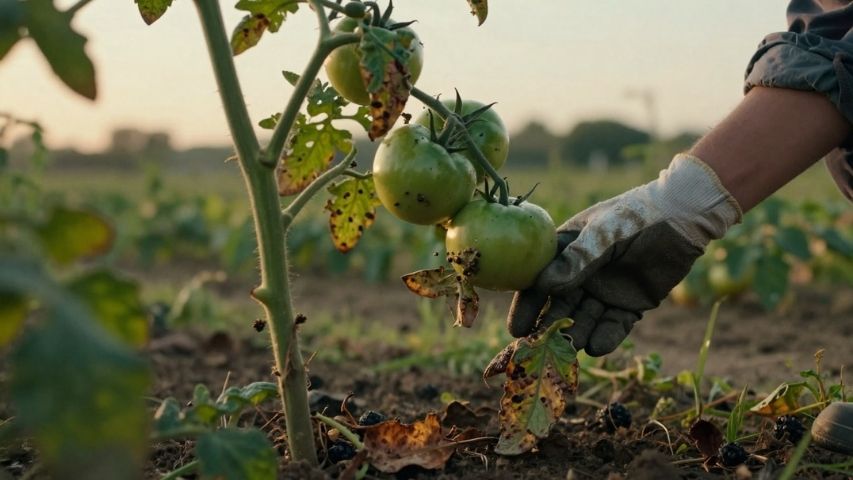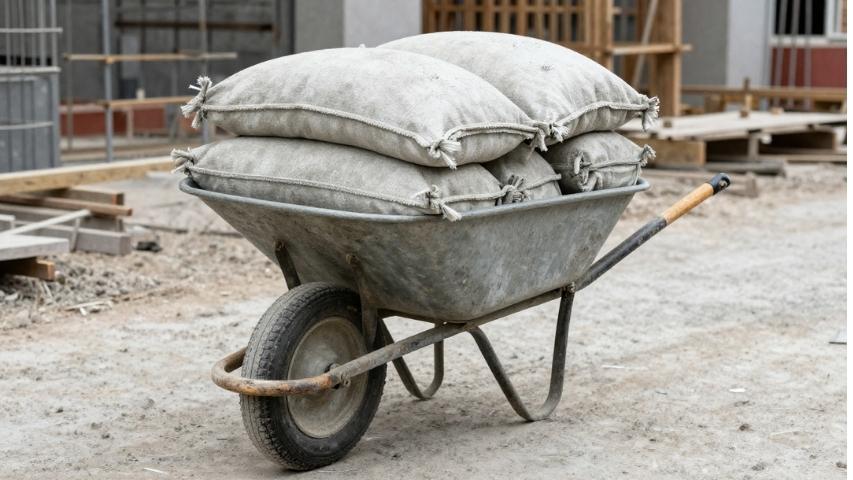Coconut trees evoke visions of tropical beaches, swaying palms, and warm, sunny days. For many, the idea of planting a coconut tree in their backyard is a dream that pairs paradise with practicality. But if you live in Southern California, you might find yourself asking a very reasonable question – will a coconut tree grow here?
This blog explores whether Southern California’s climate can support coconut trees, what challenges you might face, and the practical considerations of growing one in this region. By the end, you’ll you’ll have a clear answer and some great tips on how to bring a tropical vibe to your backyard.
Understanding Coconut Trees and Their Natural Habitat
Coconut trees (scientific name Cocos nucifera) thrive in tropical climates. Originating in coastal areas close to the equator, these iconic plants prefer:
- Typically, warm temperatures range from 70°F to 100°F.
- High humidity levels.
- Plenty of sunlight (at least 6 to 8 hours of direct sunlight daily).
- Sandy, well-draining soil.
- Proximity to salty, oceanic air.
Coconut trees are typically found in regions with stable climates throughout the year. Countries such as India, Indonesia, and the Philippines are major producers of coconuts due to their ideal growing conditions. But what about Southern California?
Can Coconut Trees Grow in Southern California?

The short answer is no; coconut trees are highly unlikely to grow successfully in Southern California due to climate limitations. Here’sHere’s why:
1. Temperature Challenges
Southern California has a Mediterranean climate, which isn’t quite warm enough for coconut trees to thrive. During the winter, temperatures in the region can dip into the 40s or, in some areas, even lower. Coconut trees are susceptible to cold and require consistently warm temperatures year-round. Prolonged exposure to anything below 60°F can cause significant damage or even kill the tree.
2. Lack of Humidity
Coconut trees thrive in high humidity, typically above 70%. Southern California, especially inland areas, has a much drier climate. Even coastal areas, while more humid, don’t match the conditions found in tropical regions. This lack of moisture can stunt the growth of coconut trees or prevent them from thriving altogether.
3. Soil Composition
Coconut palms prefer sandy, well-draining soil, which is commonly found along tropical coastlines. While Southern California does have stretches of sandy soil near its beaches, much of the region’s soil is heavier and less suited for the water flow coconut trees need.
4. Seasonal Differences
Unlike tropical zones with consistent weather, Southern California experiences defined seasons with cooler winters and occasional temperature fluctuations. These seasonal changes can stress coconut trees.
5. Limited Rainfall
Coconut trees require regular watering, especially in their early growth stages. Southern California doesn’t receive the frequent and consistent rainfall found in tropical climates, making it more challenging to support the health of coconut palms. As a result, proper irrigation is crucial to maintain optimal soil moisture levels.
6. Soil and Nutrient Requirements

Coconut palms are adaptable to different types of soil, but they thrive in well-drained sandy loam soil with a neutral pH level. In Southern California, the alkaline soils can hinder nutrient absorption. Therefore, it’s essential to supplement the soil with organic matter and fertilizer to provide the necessary nutrients for healthy growth.
Additionally, coconut trees require regular fertilization during their first few years, followed by an annual application thereafter. This rigorous fertilization schedule may be more challenging to maintain in Southern California due to limited rainfall and potential water restrictions.
7. Pest Control
Coconut trees are susceptible to various pests, including mites, beetles, and rodents. Regular monitoring and early detection are crucial in controlling pest infestations. Insecticides and fungicides can be used to prevent or treat pest issues; however, whenever possible, organic, non-toxic options should be considered. Additionally, implementing good cultural practices such as keeping the tree clean and well-pruned can also help deter pests.
In Southern California, coconut trees may also face challenges from invasive species, such as the red palm weevil. It is essential to stay informed about potential threats and take preventative measures to protect your trees.
8. Harvesting
The average lifespan of a coconut tree is around 80 years, and it can produce coconuts for up to 70 of those years. Harvesting coconuts is a labour-intensive process that requires skilled workers to climb tall trees and carefully remove the ripe fruits.
Once a coconut reaches maturity, it will fall from the tree on its own. However, in some cases, farmers may use long sticks or poles to knock down coconuts that are ready for harvesting gently.
What About Growing Coconut Trees Indoors?

If your heart is set on growing a coconut tree in California, there’s an option to explore. Some people have experimented with increasing coconut plants indoors. Here’sHere’s what to consider:
- Coconut plants can be started from a coconut seed or a sapling.
- You’ll need to provide ample lighting. Position the tree near a large window or under grow lights designed for plants.
- Maintain a warm and humid environment inside your home or greenhouse.
- Use large pots with sandy, well-draining soil to simulate natural conditions.
- Be prepared for a significant maintenance commitment, as coconut trees are not naturally suited for this environment.
While this method won’t result in a full-grown, thriving outdoor palm, it can offer a smaller-scale, ornamental coconut plant that brings tropical vibes into your space.
Alternative Suggestions for Southern California Gardeners

If you’re looking to create a tropical aesthetic in your garden but can’t grow a coconut tree, don’t worry. There are plenty of alternative palms and tropical-like plants that flourish in Southern California’sCalifornia’s climate. Consider these options:
1. Queen Palms (Syagrus romanzoffiana)
Queen palms are elegant, fast-growing palms that can add a tropical feel to any garden. They’re well-suited to Southern California’s temperature range and thrive in well-draining soil.
2. Mexican Fan Palms (Washingtonia robusta)
Mexican fan palms are iconic in Southern California, growing tall and rapidly. They’re also hardy and drought-tolerant, making them an excellent choice for low-maintenance landscaping.
3. Canary Island Date Palms (Phoenix canariensis)
These majestic palms are widely used in Southern California for their unique, full canopies and striking appearance. They thrive in warmer regions but can tolerate temperature drops better than coconut trees.
4. Bird of Paradise (Strelitzia reginae)
For a smaller tropical touch, consider the bird of paradise, a flowering plant that resembles the flora of tropical regions. It thrives in Southern California’sCalifornia’s climate and adds vibrant orange and blue flowers to your landscape.
5. Banana Plants (Musa spp.)
While banana plants don’t produce coconuts, they bring lush greenery and a tropical vibe to your garden. Some varieties perform well outdoors in Southern California with proper care and attention. The plants are also relatively easy to grow indoors in containers.
6. Orchids (Orchidaceae)
Orchids may not be native to Southern California, but they’re they’re a popular houseplant for their stunning blooms and delicate appearance. They come in a variety of colours and sizes, making them a versatile addition to your tropical garden setup.
Pro Tips for Creating a Tropical Oasis in Southern California
- Use a mix of palms, flowering plants, and ground cover to replicate a tropical garden.
- Add a water feature, like a fountain, to mimic the appearance of tropical rainfall.
- Use mulch and proper irrigation to retain soil moisture and create a lush environment.
- Incorporate natural elements, such as rocks, driftwood, and sand, for an authentic look.
Final Thoughts
Southern California can support a diverse range of plants, but coconut trees, unfortunately, are not well-suited to the region’s climate. Between temperature fluctuations, low humidity, and unsuitable soil, growing a coconut tree here is a near-impossible challenge.
That being said, you can still achieve the tropical garden aesthetic you’re dreaming of by incorporating alternative plants that thrive in this climate. Queen palms, Mexican fan palms, banana plants, and birds of paradise are all excellent options that bring the tropics to your yard with far less effort.
Looking to expand your gardening options? Browse our suggestions for heat-tolerant plants or get personalized advice from gardening experts on how to make the most of your California garden.











